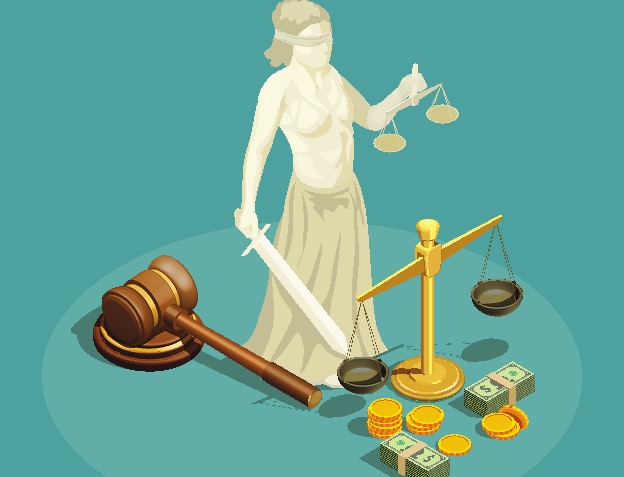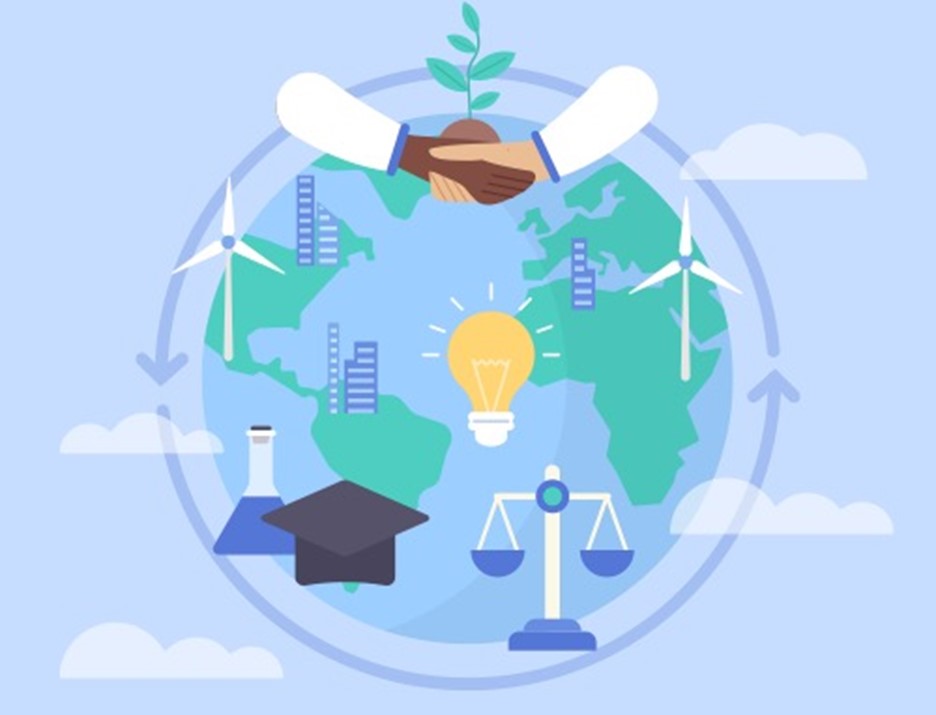
Grades K-2, 3-5
Happy EconEdMonth! Celebrate economics all month long by visiting EconEdMonth.org

Don't have an account yet? Sign up for free
Don't have an account yet? Sign up for free

Credit is a wonderful tool for the consumer. It can enhance your quality of life. It enables you to buy and enjoy a purchase before you have the money to pay for it. On the other hand, it can create serious problems for people who use it incorrectly.
 Emilia always wanted to pay off her creditors, but it was just so hard for her. She loved to shop, and there were so many good things to buy. So she kept buying and buying, using her credit card. But in recent times, she has had some difficulty paying off her debt. Creditors have been calling her asking for payments. She doesn’t even like to answer the door or phone anymore because there are so many of them calling her.
Emilia always wanted to pay off her creditors, but it was just so hard for her. She loved to shop, and there were so many good things to buy. So she kept buying and buying, using her credit card. But in recent times, she has had some difficulty paying off her debt. Creditors have been calling her asking for payments. She doesn’t even like to answer the door or phone anymore because there are so many of them calling her.
What has gone wrong here? Are there any long-term effects that Emilia may suffer because of not paying back her debts? In this lesson, you will be looking at problems people have in using credit, the nature of a credit rating and why it is a valuable resource, ways to maintain a healthy credit rating, and how to check on your own credit rating.
Credit is a wonderful tool for the consumer. It can enhance your quality of life. It enables you to buy and enjoy a purchase before you have the money to pay for it. On the other hand, it can create serious problems for people who use it incorrectly.
Visit the following website www.moneymanagement.org/Education/DearSusan/ and then click on paying off debt under the dealing with debt column. Here you can read about concerns and problems that people have about credit cards. Indicate three of the problems or concerns mentioned in this section which you think could be problems that people have with all kinds of credit, not just with credit cards. Describe those concerns.
One major problem people have with credit is that they overextend themselves. This means that they charge too much for their level of income. It is very easy to do, especially when there are so many enticing things to buy. Each of us has only so much income–no matter the income level. The high-income person has more income than low-income person does, obviously. Still, each person’s income is limited. We have to work with the income that we have; we generally cannot have everything that we want. Wealthy people have credit problems along with those who have less income.
Keep in mind that consumer credit is not income; it does not pay for the goods and services that we buy. Credit only delays the need to pay for the goods and services that we want. This means that we need sufficient income in the future to pay off our credit purchases. Our income must cover not only the cost of the items we purchase on credit but also the interest that is added. Credit granting institutions, such as credit card companies, do place limits on how much credit they will provide for you, but they do not control the total amount of credit that you have. The only person who can do that is you.
Individuals generally have problems with what the economist calls marginal analysis when it comes to making credit choices. Marginal analysis focuses on how many additional units of something we should have. In the case of credit, many people decide to add too many units of credit for the amount of future income that they have. So, the important question generally is not whether one should use credit or not. The most important question is how much credit should you be using, considering your income.
Financial experts suggest that individuals should not spend more than 20% of their net income (after taxes) on short-term credit purchases. This does not include mortgage debt, which is secured long-term debt (for five to ten years or more, and backed up by the home). So, if you have $2500 a month in net income (after taxes), you should not be making more than $500 a month in payments for short-term credit. The 20% rule is actually the maximum. Owing less than 20% per month would enable you to have more flexibility in your spending and savings. According to the 20% rule, indicate whether the following individuals are within the limits indicated by the experts.
View Interactive Activity
| Consumer Name | Net Income / Mo. | Credit Payments | Answers |
| Hanna | 1823.50 | 600 | 32.9% Over |
| Joseph | 1200.00 | 200 | 16.7% Under |
| Sarah | 1400.00 | 350 | 25% Over |
Regarding marginal analysis, consumers often do not realize the opportunity costs of moving beyond their credit limit. It might be wonderful to have an item because of a credit purchase, but if the additional credit is high relative to your income, there can be some severe consequences. When people can’t make the payments the owe, the debt collectors start calling them, some items may be taken from them (repossessed), and their credit rating declines. In some instances, the creditors through the courts may get permission to have an employer allocate part of the debtor’s salary to them — something that an employer does not want to do because of the added expense. The employer may also start to wonder about how responsible a person is if he or she cannot pay bills on time. When consumers get above their credit limit, the cost to them is substantial.
Several organizations provide help to those with credit problems. Two of them can be visited on their web sites–namely Bankruptcy Action www.bankruptcyaction.com/ and the Debt Counselors of America at http://getoutofdebt.org/ . Press the web site of the Bankruptcy Action to read about various aspects of bankruptcy. Answer the questions below from your reading.
Establishing a Good Credit Rating:
It is not difficult to stay away from bankruptcy and from credit problems if you understand certain points and then put those understandings into practice. Let’s take a look at some of the understandings. First of all, consumer credit is not free and it is not money. Your creditors expect that you will pay back your debt, plus interest. Even though the government and courts have recently become more sympathetic to the consumer having credit problems, it is still expected that you will pay back your debts.
Secondly, there is a limit to the amount of credit one can handle, based upon one’s income. In other words, credit is not unlimited for any person–whether he or she has a high or a low income. One must seriously consider the opportunity cost of gaining too much credit. Not being able to pay back your debt can affect your ability to get credit at a reasonable rate for many years.
A third understanding is that a poor credit rating can affect many areas of your life. With a poor credit rating, you will have trouble getting loans or reasonable interest rates when securing larger loans — eg., for buying a car or house. As indicated, a poor credit rating could also affect your employment.
What can you do to maintain a good credit rating so you will be able to have access to credit at reasonable rates? The first thing to do is to show that you can handle credit. You do this by applying for a credit card or a charge account at a local store. Then you purchase something on credit. The next step is to make the required payments, promptly. This shows that you are responsible enough to handle the payments.
Some of you may not be able to open a credit account or secure a credit card because you are a minor. You may still want to open the account with one of your parents or adult friends. Then you can practice charging and paying back the debt in a timely manner.
A primary goal of each person is to establish and maintain a good credit rating. A good credit rating means that you are perceived to be a good credit risk–you have experience in assuming debt and paying it off.
Checking Your Credit Rating:
Establishing credit and paying off your debt in a timely manner is just part of the routine for maintaining a good credit rating. Once in a while you should check your credit rating. There are three major firms in the nation which keep records on the credit rating of individuals. If a business has difficulty collecting a debt from someone, it will report such information to one or more of these credit rating institutions. A negative report on your credit record may mean that you will be denied some forms of credit.
Sometimes the information on your credit report is incorrect. Perhaps there was a clerical mistake. Or maybe a creditor reported an unpaid debt that was later repaid, but the record of payment never reached the credit rating institution.
According to the Fair Credit Reporting Act, you can ask for your credit report from this institution and it must provide the information for you. Generally, the firm will do so for a fee. If you find that there is false information on your credit report, there is a procedure that you can use to correct the situation.
The three major institutions that keep credit records on individuals and businesses are https://www.equifax.com/personal/ , Experian Information Solutions , and https://www.transunion.com/ . Go to one or more of these sites to learn more about these organizations.
What Businesses Look for in Your Credit Record:
What specifically do financial institutions look for in a credit report and in your current situation to encourage them to lend you money? Click https://www.myfico.com/credit-education/whats-in-your-credit-score to find out what a financial institution looks for in rating an applicant. Answer the following questions:
Students will perform this drop and drag activity to find out what institutions look for in a credit history.
When you secure your first job and are more “on your own,” it is very important to develop a good credit reputation by starting with charge accounts and credit cards. If you prove that you can handle those responsibilities well, you will then be able to secure credit for most costly items, such as for automobiles and homes.
Read the following case study and answer the questions that follow:
Amy is a recent college graduate who earns about $l,500 in take-home pay. She has an apartment on which she pays $500 in rent and utilities. She makes two monthly loan payments: $l20 for her student loans and $150 for her car. She is also paying about $20 on her credit cards. She has just seen some furniture that she thinks is stunning. She could buy the pieces by paying $50 a month over three years. She wonders whether she should do so.

Grades K-2, 3-5

Grades 9-12


Grades 9-12
